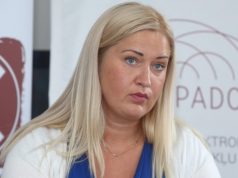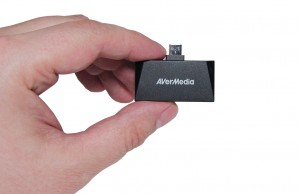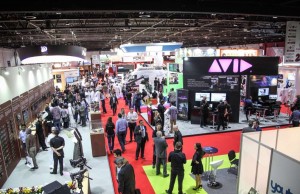We should recall that MediaSat is a constant media partner of Telco Trends conference held in Latvia, so it monitors closely the development of Latvian telecom. Despite the fact that it’s a very small country, it has something to show off. The history of Latvia’s digitalization is interesting and, I dare say it, the didactic one. The project was implemented successfully in the shortest possible time by Lattelecom Company. Girts Kleinbergs, Lattelecom’s project manager of digital terrestrial TV, told how it was happening. He pointed out the following phases of transiting to the digital:
• 02.09.2008 – Governmental regulations of transiting from analog TV to the digital one.
• 15.10.2008 – 15.12.2008 – tender held by the Ministry of Transport for issuing a digital broadcasting licence;
• 17.02.2009 – Lattelecom was announced the tender winner. There were laid down the following conditions:
– to ensure transiting to the digital broadcasting until 01.12.2011;
– the Lattelecom’s right to digital broadcasting and using spectrum of radio frequencies was conceded until 31.12.2013;
– to meet all the commitments in respect of transition rules.
• 30.03.2009 – Digital broadcasting started in a test mode in Riga broadcast region, and the Latvian State Television and Radio Center started building networks all over Latvia.
• 07.2009 – Digital broadcasting in Riga broadcast region started in a commercial mode.
• 12.2009 – Digital broadcasting in a test mode is accessible in 99% of territory.
• 01.02.2010 – Broadcasting in a commercial mode was already ensured in 99% of territory (using 3 networks).
• 01.03.2010 – In Riga broadcast region the most of TV channels gave up analog broadcasting.
• 01.06.2010 – Transition to the digital TV broadcasting in Latvia was fully completed.
We should note that not all the countries of Western Europe managed transiting to the digital by that time.


Mister Kleinsbergs went into detail on some aspects of transiting to the digital broadcasting. In particular he spoke about the way of informing people: «The most efficient can be considered information provided in a call-center, as well as advertising on TV channels. Having seen the advertising material on TV or elsewhere, customers dialed number 177 to get more information and purchase everything required for transition. Almost all the events were funded by Lattelecom. The exception was TV clips, where the same TV channels notified about forthcoming transition to a digital TV». There were prepared some social packages assimilated for different strata of society.
The viewers can apply any receiver compatible with DVB-T MPEG-4. It doesn’t mean, however, that the appearance of receivers was let taking its course: «As a tender condition, the providers of receivers were committed to run compatibility tests in the Digital TV labs laboratory (the Great Britain), in order to ensure their full compliance with minimal requirements established by Lattelecom, and to achieve the compliance of receivers with quality and price criteria».
According to the information provided by a Lattelecom’s representative, the transition to the digital had a positive effect on the Latvian TV market.

Girts Kleinbergs is sure that the digitalization of Latvia was successful, and during 2 years without governmental funding it was managed transiting to the digital 210 000 households. According to him, the market doesn’t have any essential problems and there are observed positive trends.
Status of digital broadcasting in Latvia (apart)
• Applied technologies:
– DVB-T (digital video broadcasting terrestrial)
– MPEG-4 video coding
– Conax data encoding
• Available networks
– Use of 6 DVB-T networks
– The first one is used exceptionally for free channels’ broadcasting
• Available channels
– 57 channels available, including 4 free ones
– 3 HD-channels available to be purchased in addition to the basic package.
Lattelecom company’s representative predicts the development of a number of trends on the market:
• Pay TV market with present number of free channels will remain saturated, at around 85%.
• Spread of broadband networks will continue along with interactive TV share’s increasing.
• Digital terrestrial TV will go on being alternative to the cable TV and satellite TV beyond the territory of broadband networks.
• At present the interactive TV along with digital terrestrial TV are accessible to almost all segments of consumers, reaching their maximal geographical coverage.
• 4G has a potential for developing Оver-The-Top platforms – substitutes for the digital terrestrial TV.
With the main lines of development of Latvian telecommunications market the audience was acquainted by Edmunds Belskis, Director of the Communications Department within the Ministry of Transport of the Republic of Latvia. He presented a report «On prospects for developing electronic communications and ICT (Information and Communications Technologies) in the Republic of Latvia».
Mister Belskis told the audience about the innovations to be introduced in Latvia by the European Union, and made it acquainted with the basic regulatory documents in ICT sector. The Director of the Communications Department marked the main lines of industry’s developing:
1) The development of the broadband access network. Up to August 31, 2015 it is stipulated for building about 1900 km of fiber optic cable transport network and setting up 165 fiber optic access points. «Nowadays there have been concluded contracts for projecting and construction works of the fiber optic network’s infrastructure. It is planned that in the early July this project’s implementation will start in Latgale», – the speaker informs.
2) The introduction of virtual electronic digital signature, invented in Latvia. Unlike a usual electronic signature requiring a smart card and a card reader, in this case the user needs just a computer and Internet access.
3) Electronic voting. The innovation will enable the electorate to vote remotely, i.e. without visiting a polling center. There appear many questions to the guarantees of the rule of law, therefore in Latvia this project still remains under elaboration, however in Estonia it already woks.
4) The project of assigning an official electronic address.
In September 11, 2013 the European Commission presented a regulation suggestion on improving the uniform telecommunications market. In the context of this suggestion there was considered a topic actual for Ukraine – management of using spectrum. The regulation project provides for continuous measures on spectrum harmonization, supposing the right for the European Commission to approve permits for its using. The European Commission will be able to take decisions on already issued permits and their early termination, leaving the right for the countries to make decisions on radio-frequency resource for the needs of public order, security and defense. There is also expected to draft a frequency plan on the European Union’s scale. Latvia opposes strongly such a distribution. Edmunds Belskis affirms that they will stand upon the country’s frequency resource and consider that the redistribution will lead to the overcentralization.
Besides, the regulation suggestion includes: principle of network neutrality, roaming cancellation, introduction of a uniform permit for operator, improved consumer rights’ protection, and amendments to the activities of BEREC (Body of European Regulators for Electronic Communications).
The world stands on the threshold of 5G. In June 16, 2014 the European Commission signed the agreement with the South Korea on 5G elaboration and joint investigations in this field. Both parties also agreed the necessity of frequencies’ harmonization for 5G on a global scale. The advantages of new standard are evident:
It provides 1000 times more wireless capacity y more variety of service potential, comparing with the systems of the year 2010.
Energy saving for a provided service up to 90%. The main attention will be paid to mobile communications networks, where the dominant energy consumption comes from the radio access network.
Reduction of average cycle duration of new service making from 90 hours to 90 minutes.
Creation of secure reliable Internet with “zero receptivity” of downtime for service providing.
Contributes to a compact expansion of wireless connections, which will allow connecting over 7 trillion wireless devices serving over 7 billion people.
Gives to a user an advanced opportunity of controlling confidentiality.

In Latvia the broadband digital networks penetrate into the rural area. Under the governmental program, in the first stage (until the middle of 2015) there will be set up 177 access points and built about 1 900 km of optic network. In the second stage (in 2015-2020) there will be set up 200 access points and built about 3 000 km of optic network.

Gunta Lidaka, Executive director of the Latvian Broadcasters’ Association, presented in figures and facts the process of Latvian market’s transforming under the effect of globalization (from 1999 Latvia is a WTO member), digitalization (in 2006 Latvia signed the Regional Agreement on Planning Digital Broadcasting, which opened global technological opportunities of TV content’s spreading) and political regulation (changes of EU and Latvia’s legislation). The most important problem of the Latvian market became the lack of local television content.






















